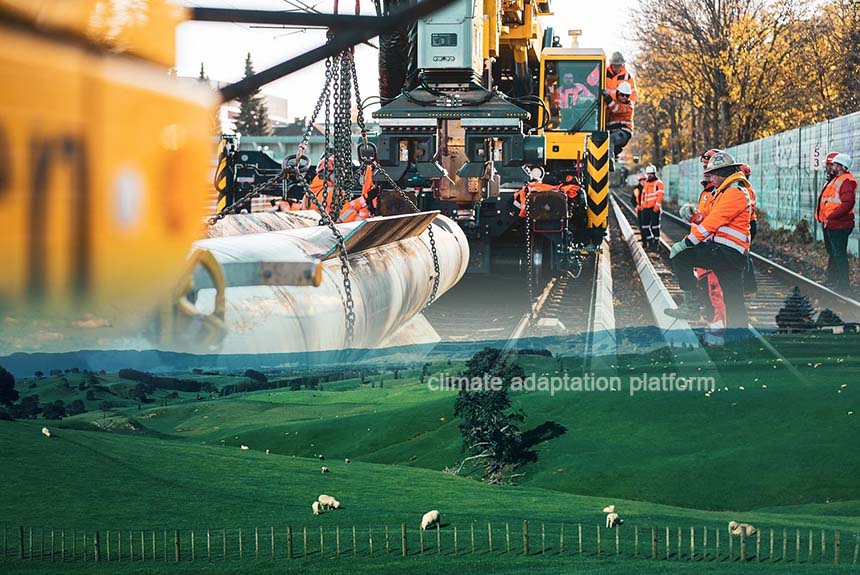New Zealand is known around the world as a pristine paradise. Perhaps there is some truth to the country’s claim to fame because nearly 40% of the country is covered in forests, and population density is 19.69 people per square kilometre, putting New Zealand in the top 35 least population countries worldwide.
Regarding carbon emissions per capita, in 2022, an average Kiwi emitted 6.2 tonnes, lower than its neighbour Australia at 15 per capita but higher than the United Kingdom’s 5.2 tonnes per capita (Hall, 2024).
Per sector, transport, primarily land transport, is the second largest source of greenhouse gas emissions in Aotearoa, New Zealand, accounting for about 17% of the country’s emissions. The sector is also the fastest-growing source of domestic emissions (Climate Change, 2024).
The New Zealand Transport Agency (NZTA) released a new research study in June 2024, “RR 720 – Determining the carbon footprint of land transport infrastructure in New Zealand,” the research sought to quantify the carbon footprint of existing land transport infrastructure, providing a high-level, whole-of-life carbon footprint that addresses construction, maintenance, operation and end-of-life carbon emissions.
The scope of the study covers embodied carbon and energy across the entire life cycle of New Zealand’s land transport infrastructure. Still, it excludes enabled emissions or those coming from vehicle emissions. As the title highlights, the Agency aims to quantify the carbon emissions of the country’s land transport infrastructure (road and rail) and identify opportunities for emissions reductions.
The study notes that the literature review revealed that the embodied carbon in infrastructure was not given much attention in policy and literature compared to vehicle emissions from the use of transport infrastructure. Instead, it finds that embodied carbon in construction and infrastructure is considered a hidden impact.
Land transport infrastructure is considered a significant carbon emitter contributing to climate change. “The research focused on embodied carbon of land transport infrastructure (road and rail) and analysed the whole-of-life emissions of New Zealand’s land transport network, including material and construction, maintenance, operation and end-of-life. It excluded vehicle emissions that arise from the use of the infrastructure.”
“This research estimates that the upfront carbon footprint of the road network, which includes state highways, local roads and all associated assets such as footpaths, traffic signals and signage, is 37,250 ktCO₂e (±10%). Maintenance emissions for the road network have been estimated at 855 ktCO₂e (+10%, -14%) per year, with operational emissions estimated at 35 ktCO₂e (+10%, -22%) per year. The total national upfront carbon footprint for the rail network, including tracks, structures, retaining walls and culverts, is 15,380 ktCO₂e (±15%). Maintenance emissions for the rail network have been estimated at 220 ktCO₂e per year.”
The study’s key findings include:
- Considering whole-of-life carbon (including embodied and enabled emissions) when making infrastructure investment decisions can reduce carbon emissions,
- Maintaining and optimising the current network is better from a carbon perspective than building new, and all new assets will increase carbon through upfront emissions as well as through the maintenance cycles and end-of-life impacts that are created;
- There is a lack of information about carbon emissions from maintenance activities on road networks and from end-of-life treatment of assets. This presents a risk to the country’s future infrastructure investment on increased maintenance costs due to more heavy vehicles on the roads and impacts from extreme weather events.
- A just transition, community wellbeing, and climate resilience can also help the sector’s overall emissions, and,
- Developing, trialling, implementing and eventually mandating low-carbon materials presents a significant opportunity to reduce upfront carbon emissions and consider it in future investments.
Land transport infrastructure plays a significant role in our day-to-day lives. The report notes that how New Zealand constructs, maintains and manages its land transport infrastructure impacts how it can meet its Paris Agreement commitment to keep global warming within 1.5°C.
Literature and policy usually focus on emissions from infrastructure use, yet there is a growing recognition of the whole-of-life impact of infrastructure.
The NZTA report delves into the carbon footprint of land transport infrastructure in Aotearoa, New Zealand. It examines emissions across construction (including materials), maintenance, operation, and end-of-life emissions of the transport network, highlighting opportunities for emissions reduction.
Sources:
Determining the carbon footprint of land transport infrastructure in New Zealand. (2024 June). NZ Transport Agency Waka Kotahi research report 720. Retrieved from https://www.nzta.govt.nz/assets/resources/research/reports/720/720-determining-the-carbon-footprint-of-land-transport-infrastructure-in-nz.pdf
Climate change. (2024). NZ Transport Agency. Retrieved from https://www.nzta.govt.nz/roads-and-rail/highways-information-portal/technical-disciplines/environment-and-sustainability-in-our-operations/environmental-technical-areas/climate-change.
Tansport transition. (2024). NZ Transport Agency. Retrieved from https://www.nzta.govt.nz/about-us/about-nz-transport-agency-waka-kotahi/environmental-and-social-responsibility/transport-transition/
Hall, K. (2024, May 19). Greenwashing: Is New Zealand really a clean, green destination? NZ Herald. Retrieved from https://www.nzherald.co.nz/lifestyle/greenwashing-is-new-zealand-really-a-clean-green-destination/WGQBIODBL5C6DF2VPZ7QGJZOYM/



Leave a Reply